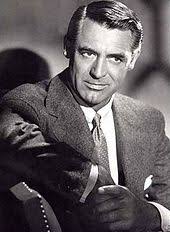Why would we cede to strangers the most characteristic elements of our presence?
 Several recent YouTube videos have shown experiments where a person agrees to work with an A. I. firm to create an avatar to stand in for themselves. The effort involves a little more work than I thought: lots of sampling of one’s voice and body to get enough “data” to create a passable clone. For some reasons this has some appeal, even beyond gaming.
Several recent YouTube videos have shown experiments where a person agrees to work with an A. I. firm to create an avatar to stand in for themselves. The effort involves a little more work than I thought: lots of sampling of one’s voice and body to get enough “data” to create a passable clone. For some reasons this has some appeal, even beyond gaming.

To be sure, many of us are required to put in facetime with groups that can drain our energies. I remember a faculty meeting where we had an extended debate about what kind of pencils to pass out at open houses. It would have been nice to have an avatar sit through that discussion. Similarly, those obligatory photos of faculty found in a hallway just outside of most academic departments can be awkward. I always thought that I might quietly slip in a picture of the classic film star, Cary Grant, above my name. The narcissists passing by would never notice. But others might quickly recognize that Grant’s agreeable likeness is nothing like the prickly guy they know from faculty meetings.
As a rhetorician I am interested in the process,where we pass off someone’s, nay, some electronic device’s efforts to stand in for our personal rhetoric. Among other things, A.I. is about finding another way to clothe part of ourselves.
But why would we cede to strangers the most characteristic elements of our presence? Think of living life with only a collection of greeting card words to represent our feelings, or depending on the slack descriptive prose of a high school textbook to describe everything else. Most of us would hate these limitations. We’ve worked hard in life to acquire a recognizable and successful identity that reflects our experiences and values.
We all carry unique rhetorical fingerprints.
 If I was still in a classroom on a daily basis—and characteristically overestimating my persuasive powers–this would be the point I would want to pass on to my students. They should insist on the perogative to speak in their own authentic voice. No A.I. system is going to get it quite right. How could it? Lived experience is unique to our biological selves, not to silicon-based and generic memories pasted together by an anonymous organization in our name. By early adulthood we have already earned the right to see and describe the world in our terms. Achieving a coherent and specific lexicon is a significant developmental achievement, a kind of rhetorical fingerprint. Ceding control of the ways we leave our mark on the world is fool’s errand. It is one thing to sing another’s song. It is altogether different to allow any other source to speak in our name.
If I was still in a classroom on a daily basis—and characteristically overestimating my persuasive powers–this would be the point I would want to pass on to my students. They should insist on the perogative to speak in their own authentic voice. No A.I. system is going to get it quite right. How could it? Lived experience is unique to our biological selves, not to silicon-based and generic memories pasted together by an anonymous organization in our name. By early adulthood we have already earned the right to see and describe the world in our terms. Achieving a coherent and specific lexicon is a significant developmental achievement, a kind of rhetorical fingerprint. Ceding control of the ways we leave our mark on the world is fool’s errand. It is one thing to sing another’s song. It is altogether different to allow any other source to speak in our name.
Of course my logic includes the premise that we see our discourse as an extension of our authentic selves. But straight discursive prose tends to be generic: the same kind of language you might find in a Wikipedia article or a textbook. Some students asked to write about what they do not yet fully know may be only too happy to pick up anything already written that they can claim, even though this is plagiarism. In assigned reports and summaries of events, schools encourage student writing that is disassociating and neutral. The defining fingerprints of any author will be concealed. Even so, pure exposition tied to one’s own avatar won’t garner much interest. Who really wants to be a talking encyclopedia? Most of us need to have a unique rhetorical style that is ours alone. This is what it means to earn the honor of authentic authorship.
![]()
 It pays to be aware of A.I. messages that are inherently fraudulent without an actual author.
It pays to be aware of A.I. messages that are inherently fraudulent without an actual author. Of course there are routine messages where A.I. may get a simple point across, or necessary history on a topic or problem. Businesses like the idea of A.I. for messages because they can come up with facsimiles of transactional exchanges. Predictable requests are identified and answered, policies are explained, and web addresses are passed on. But there is another whole side of language. Language is expressive as much as instrumental. It exists to convert our feelings into words that have meaning for us and the receiver. Ordinary language is the domain of sentient beings who are biological rather than electrical.
Of course there are routine messages where A.I. may get a simple point across, or necessary history on a topic or problem. Businesses like the idea of A.I. for messages because they can come up with facsimiles of transactional exchanges. Predictable requests are identified and answered, policies are explained, and web addresses are passed on. But there is another whole side of language. Language is expressive as much as instrumental. It exists to convert our feelings into words that have meaning for us and the receiver. Ordinary language is the domain of sentient beings who are biological rather than electrical.